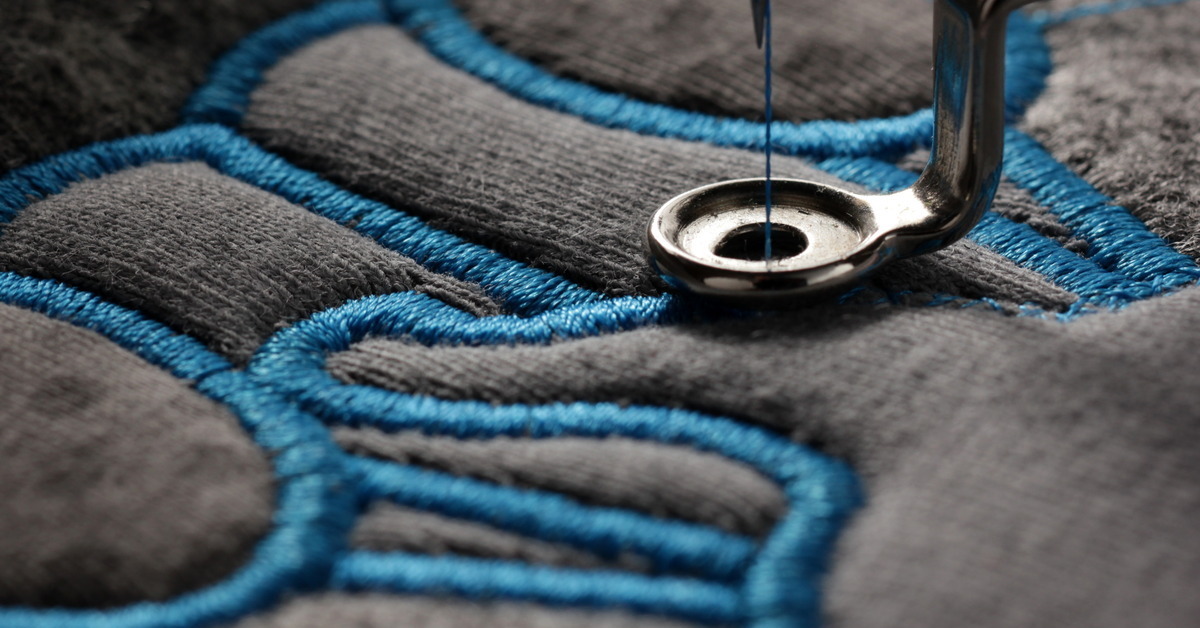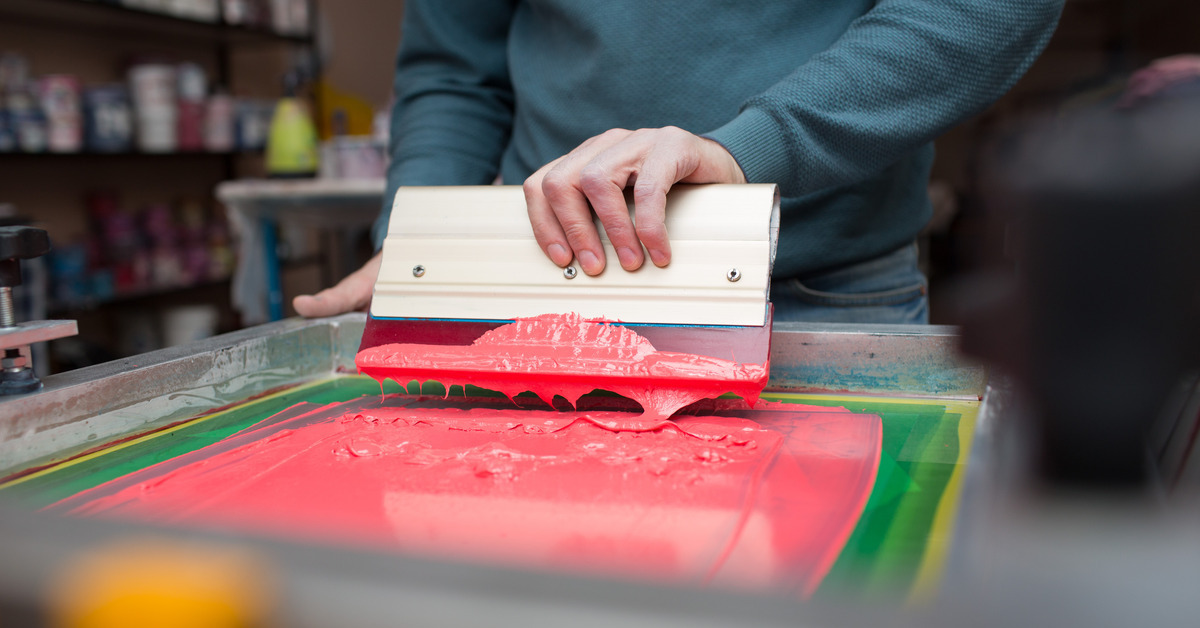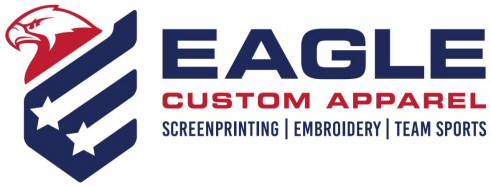Custom shirts and jerseys are a great project. Whether you’re looking to create shirts for a special event, team or youth group, there are many ways to go about it. That said, there are two standout options for designing and producing these custom shirts: screen printing and embroidery.
While both options have their ups and downs, understanding the difference between screen printing and embroidery can help you out in the long run. Eagle Custom Apparel is here to go over some of these options and how you can figure out which one better suits your individual needs.
Understanding Screen Printing
Screen printing, also known as silkscreen printing, is an age-old technique revered for its ability to produce vibrant and long-lasting designs. Screen printing involves pushing ink onto fabric through a mesh stencil (screen) and applying the designs through that. This method is particularly popular for large orders due to its efficiency and cost-effectiveness when printing in bulk.
A key advantage of screen printing is its ability to produce vivid colors, especially on darker fabrics. This process allows designers to layer inks to create bold, striking designs that really pop. It’s an ideal choice for projects where color impact is an important factor. Screen printing also allows for a range of special effects, from metallic and glitter inks to puffy and glow-in-the-dark finishes, offering designers a plethora of creative possibilities.
Exploring Embroidery
In contrast to screen printing, embroidery offers a tactile and sophisticated finish that adds a touch of elegance to your garments. The process involves stitching the design onto fabric using threads, creating a textured and durable embellishment. It’s a popular and time-tested technique that offers a classic and professional appearance.
One of the standout benefits of embroidery is its durability. The use of threads ensures that the design remains intact, wash after wash, without fading. This makes embroidery a preferred choice for items that undergo frequent use, such as uniforms and corporate apparel. Furthermore, embroidery adds a dimension of texture that screen printing cannot replicate, giving designs a rich and premium feel.

Cost Considerations in Customization
When it comes to choosing between screen printing and embroidery, it’s always important to take cost into consideration. Each method has its own pricing structure, and understanding these can help you make an informed decision.
Screen printing generally becomes more cost-effective as the order size increases. The initial setup involves creating screens for each color in the design, which can be an investment. Producing large quantities of custom shirts is an affordable process after the initial cost of creating all of the screens.
On the other hand, embroidery pricing often depends on the complexity of the design and the stich count. Factors like the number of colors that you use may also add to the cost. This means that while embroidery might be more expensive for larger designs, it may be more cost-effective for smaller, simpler designs like a sports team logo on the chest.
Durability and Longevity
You may also want to consider the longevity of the design when it comes to making custom apparel. Both screen printing and embroidery offer distinct advantages in this regard. Understanding these can help you choose the best method for your project, ensuring that the design remains vibrant and intact over time.
Screen printing produces resilient products—even more so if you invest in higher quality inks or fabrics. The printed designs can withstand frequent washes without significant fading, making them suitable for everyday wear.
However, embroidery excels in durability. The threaded designs are less prone to wear and tear, maintaining their appearance even after numerous washes. Embroidery is one of the best options for heavy-duty garments like work uniforms and sportswear.
Aesthetic Appeal and Texture
When looking at the differences between screen printing and embroidery, you want to consider the visual flair and texture of the garments. Both screen printing and embroidery bring unique aesthetic qualities to the table. The choice comes down to the desired look and feel of the final product.
Screen printing stands out with its capacity to produce vibrant and smooth finishes. The ink lies flat on the fabric, allowing for a sleek and modern look. This method is particularly advantageous for designs that require bold colors or intricate artwork that looks best with sharp details.
Meanwhile, embroidery adds depth and texture, offering a sense of luxury and craftsmanship. The raised stitches create a three-dimensional effect, making the design pop. This tactile quality can enhance the perceived value of the garment, providing a sophisticated and professional finish.

Application and Fabric Suitability
It’s always a good idea to consider the type of fabric when deciding if you want to go with screen printing or embroidery. Each method interacts differently with various materials, affecting the final outcome of the design.
Screen printing is highly versatile is easy to apply to a wide range of fabric types, including cotton, polyester, and blends. It is particularly effective on smooth, flat surfaces where the ink can adhere evenly.
On the other hand, embroidery works best on thicker, more robust fabrics like polos, jackets, and caps. The stitching process requires a firmer foundation to support the threads and prevent distortion. While embroidery may not be ideal for lightweight or stretchy materials, it’s a very good option on items that benefit from added texture and dimension, providing a tailored, refined look.
Evaluating Turnaround Time
Depending on the size of your project, you may also want to account for deadlines. The choice between screen printing and embroidery can significantly impact production time, which can affect project timelines.
After finishing the initial setup, screen printing is a relatively fast process. It can efficiently handle large orders, making it ideal for projects with tight deadlines. Automated machines can produce multiple prints simultaneously, ensuring that they can complete large quantities in a timely manner.
Embroidery, while offering high precision and quality, tends to have a longer production time. They need to stitch each design individually, which can slow down the process, especially for complex patterns.
If you’re looking to elevate your brand or create garments for your group or event, consider working with us at Eagle Custom Apparel. We offer custom printing and embroidery, and we dedicate ourselves to customer service.
We’re a family owned business that understands your needs and we want to help you bring your creative vision to life with craftsmanship and personalized service. Whether you need vibrant screen printing or timeless embroidery, we have the perfect solution for you. Contact us today to start designing unique apparel that makes your brand soar above the rest!

Recent Comments